41 chicken wing dissection worksheet answers
Students use this video as a tutorial in order to dissect their own chicken wings during the Life Science Grade 4 module. The purpose of the dissection is to help students understand how different structures (like muscles, nerves, and bones) work together to allow the chicken to move (aligned with NGSS 4-LS1-1). This opens in a new window ...
Chicken Wing Dissection –Skeletal and Muscular Systems. Purpose: To observe how the muscular and skeletal systems work together to move/support a chicken’s wing and relate this to the arrangement of comparable anatomical structures of the human body. Lab report: You will submit a lab report on lined notebook paper. The lab report will contain:
View Chicken-Wing-Dissection-Worksheet.doc from AP WORLD 238 at Cary High. Calendar #5 Unit 6: Muscular System MONDAY 1 Intro to muscular system Homework Read p. 162-166 Guided reading worksheet 8
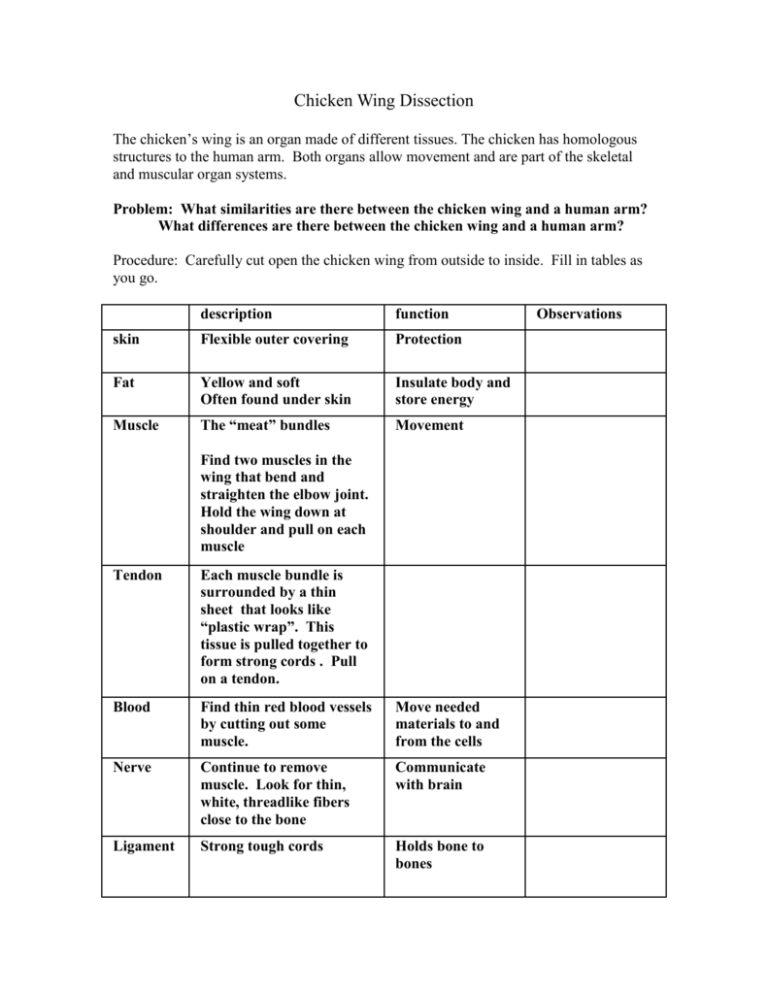
Chicken wing dissection worksheet answers
Learn chicken wing dissection with free interactive flashcards. Choose from 270 different sets of chicken wing dissection flashcards on Quizlet.
Anatomy and Histology Lab: Chicken Wing Dissection Background An uncooked chicken wing is ideal for studying anatomy and histology and is remarkably similar to the human arm. Review the diagrams below before answering the pre-lab questions. Pre-Lab Questions 1. What type of organs are the humerus, radius, and ulna? Bones 2.
Obtain a chicken wing and dissecting equipment. Rinse the chicken wing under cool, running water and thoroughly dry it with a paper towel. Pick up the wing and imagine it is still on the chicken. Answer Observation Question #1. Imagine that the wing is your arm. Move the joints, look at Figure 1 and . answer Observation Question #2. Figure 1
Chicken wing dissection worksheet answers.
Start studying Chicken Wing Dissection Lab. Learn vocabulary, terms, and more with flashcards, games, and other study tools.
Chicken Wing Dissection Page 2 Cartilage Between the bones is another shiny white material that is slippery. This is cartilage, which helps the bones move without grinding against one another, or without causing trauma. Wing a. Move the wing again. Explore how the muscles, tendons, ligaments, and cartilage play roles in the wing’s movement. b.
1. One raw chicken wing for each student. Chicken wings can be purchased at the local supermarket in the ‘inexpensive’ family pack. 2. Scissors 3. Paper plate 4. Tweezers or forceps Sequence of Steps Read the description of each of the tissues or organs and then begin the dissection for that particular tissue/organ. In
Chicken Wing Dissection Guide Objectives By the end of this lab, you will be able to: 1. Safely demonstrate how to load and unload a scalpel. 2. Show proper use of scissors as a cutting and a blunt tool (latter: “spreading technique”). 3. Identify skin, fat, blood vessels, muscle, tendon, ligaments, cartilage, and bone in a chicken wing
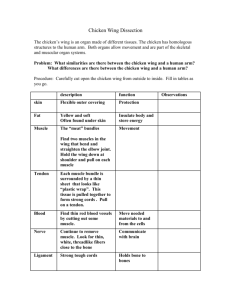
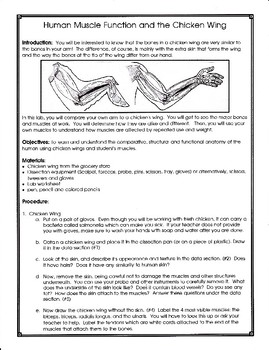

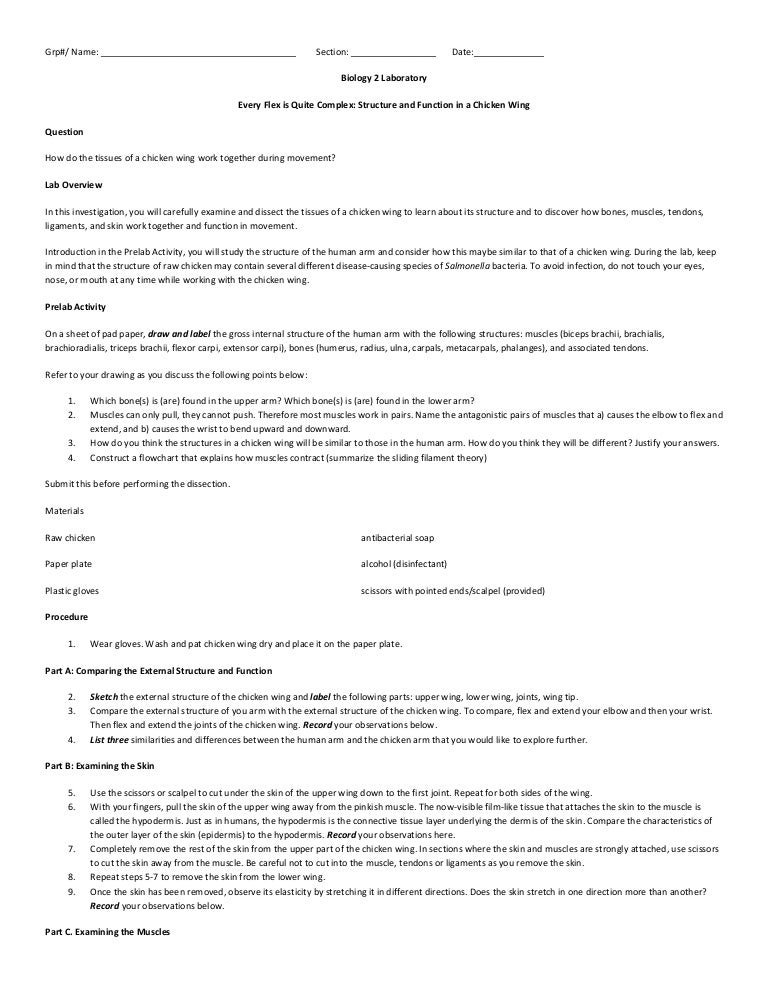
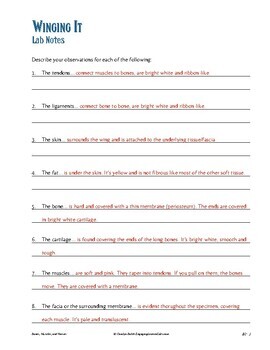



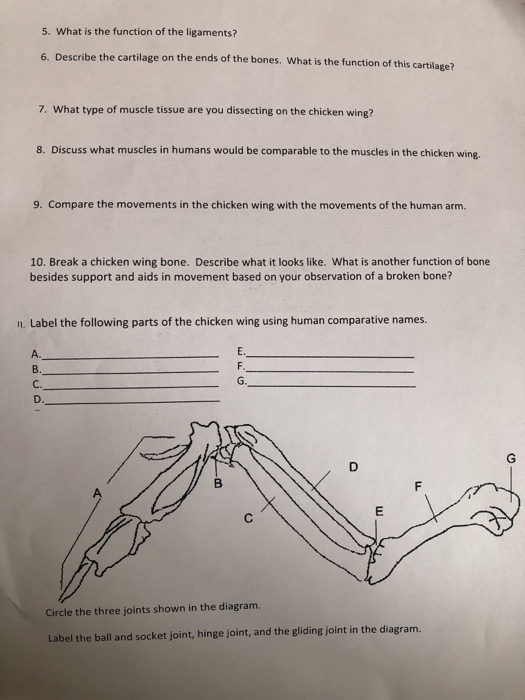
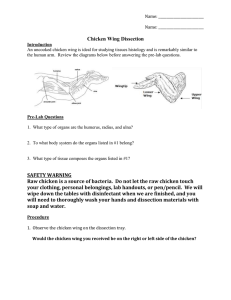


![Muscular System Lab Activity: Chicken Wing Dissection [Distance Learning]](https://ecdn.teacherspayteachers.com/thumbitem/Muscular-System-Lab-Activity-Chicken-Wing-Dissection-Distance-Learning--4697660-1627724099/original-4697660-4.jpg)

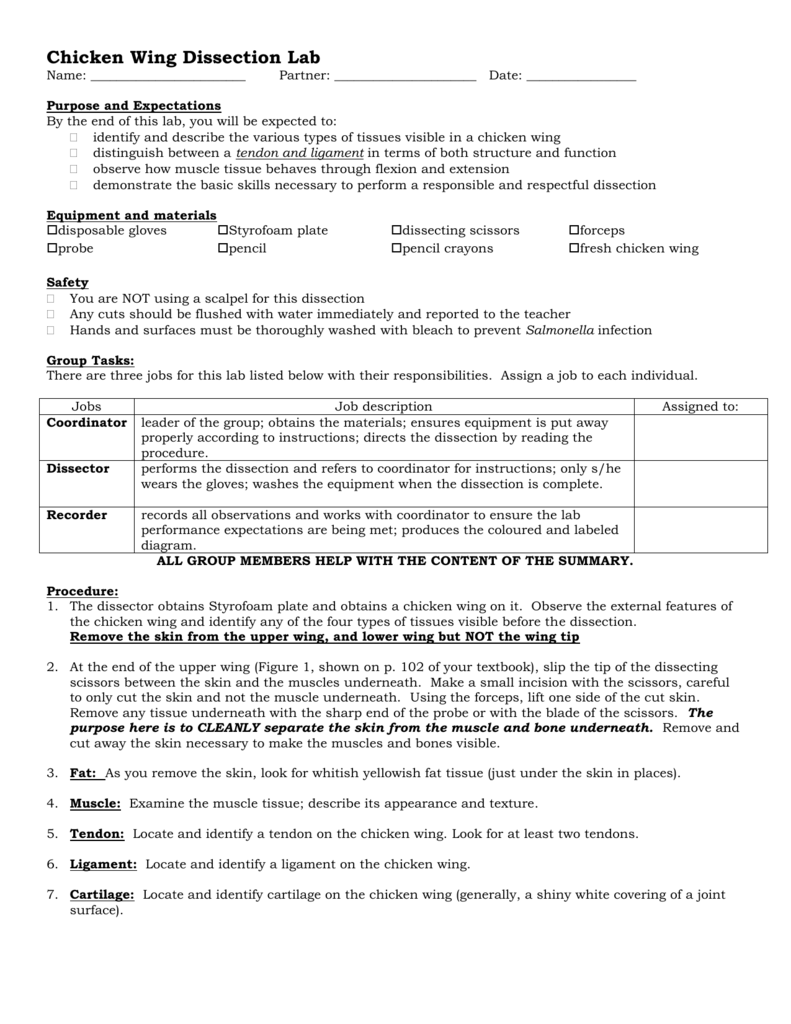


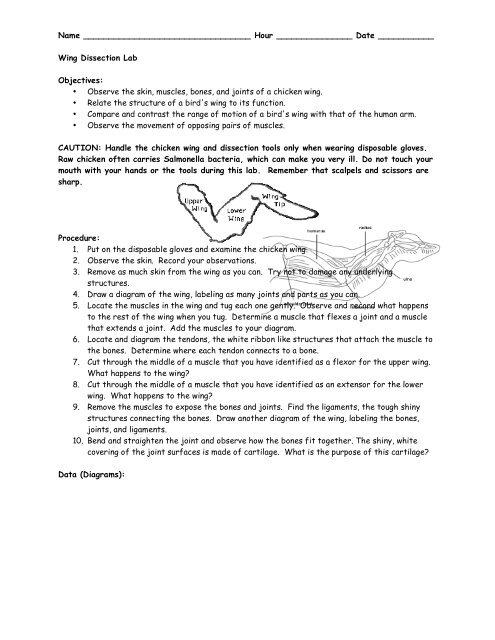

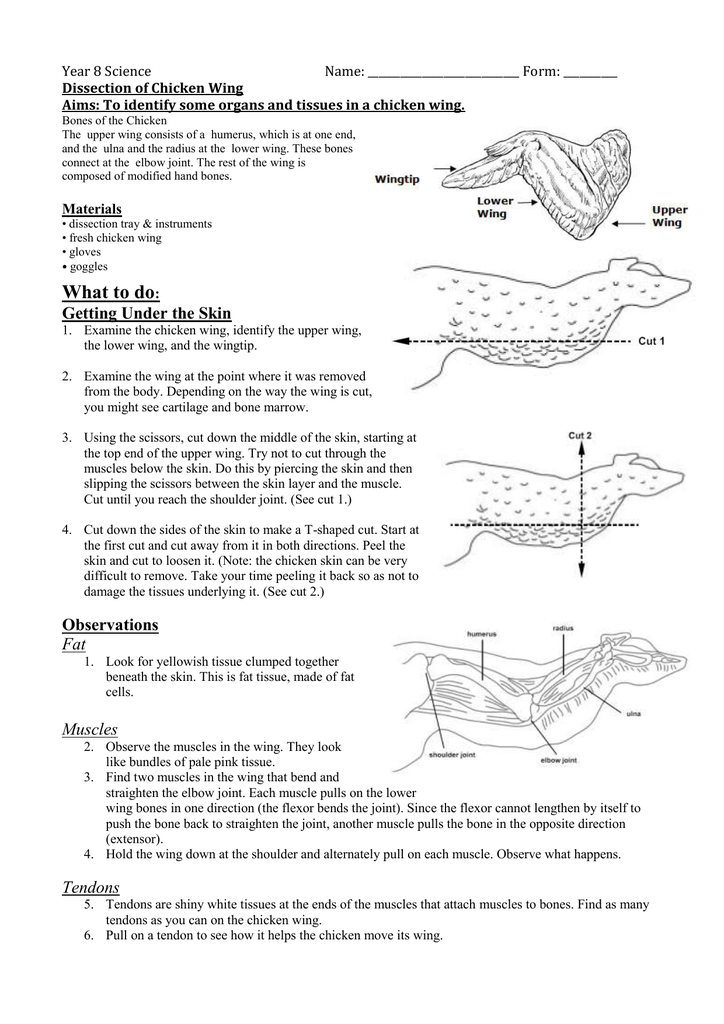
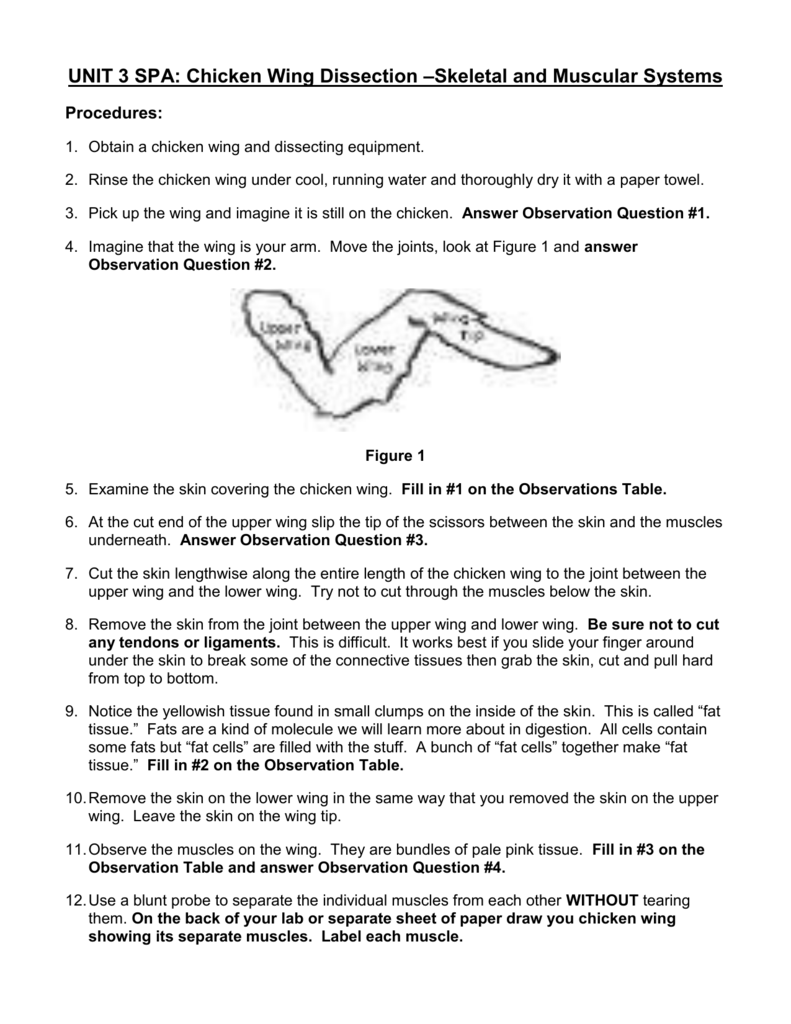






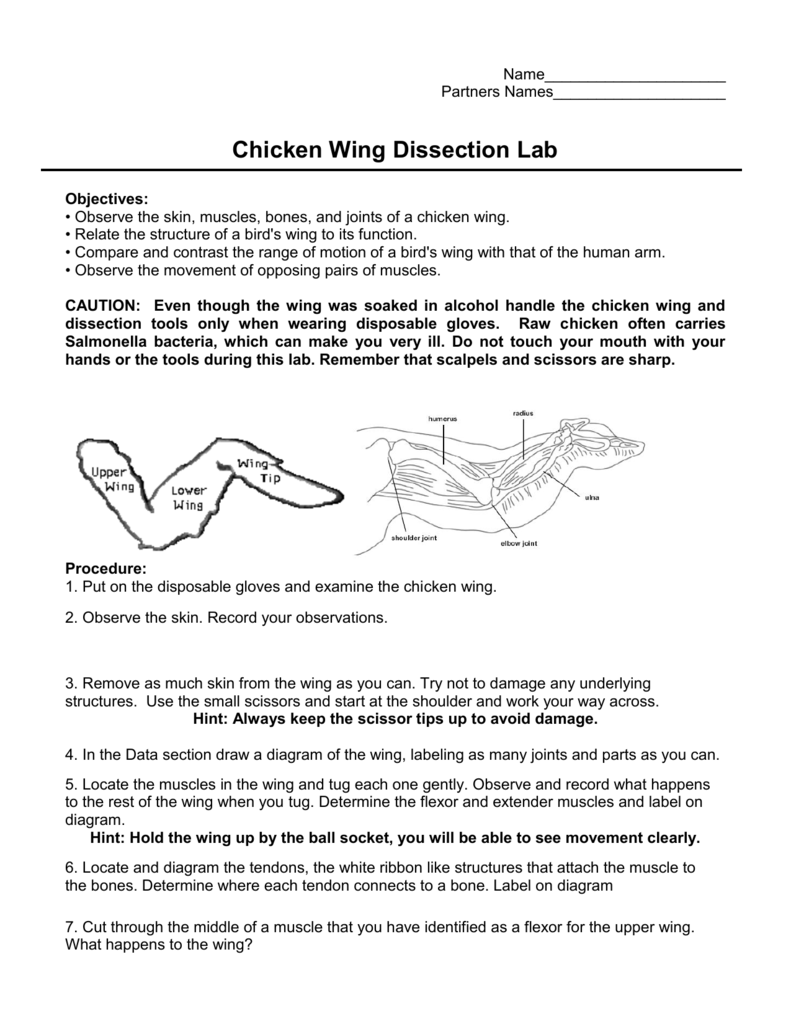
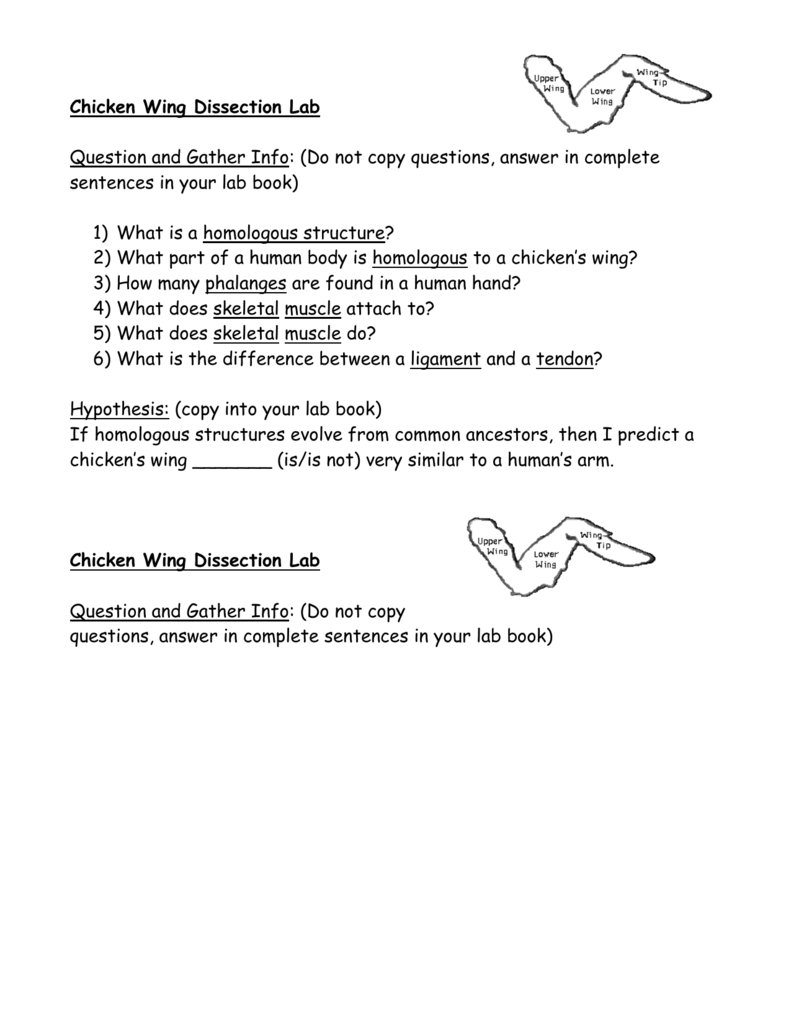

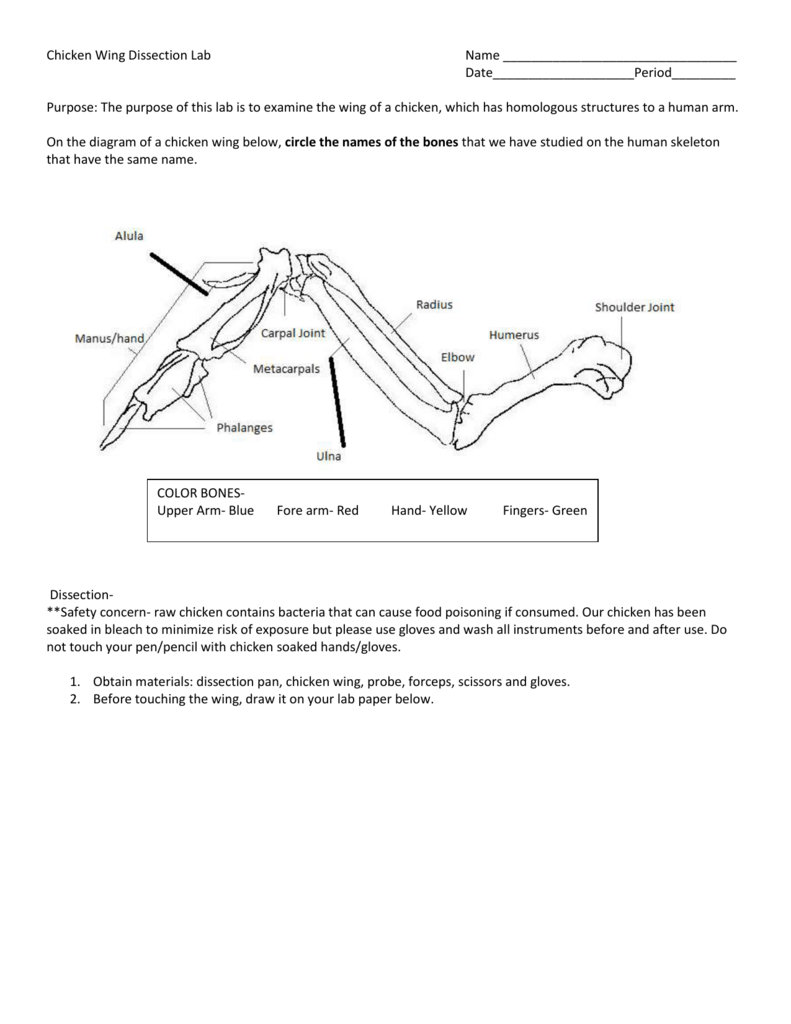


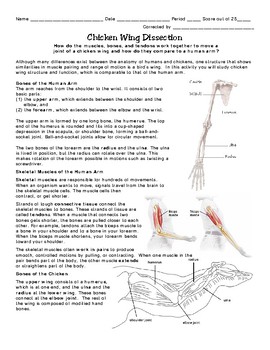
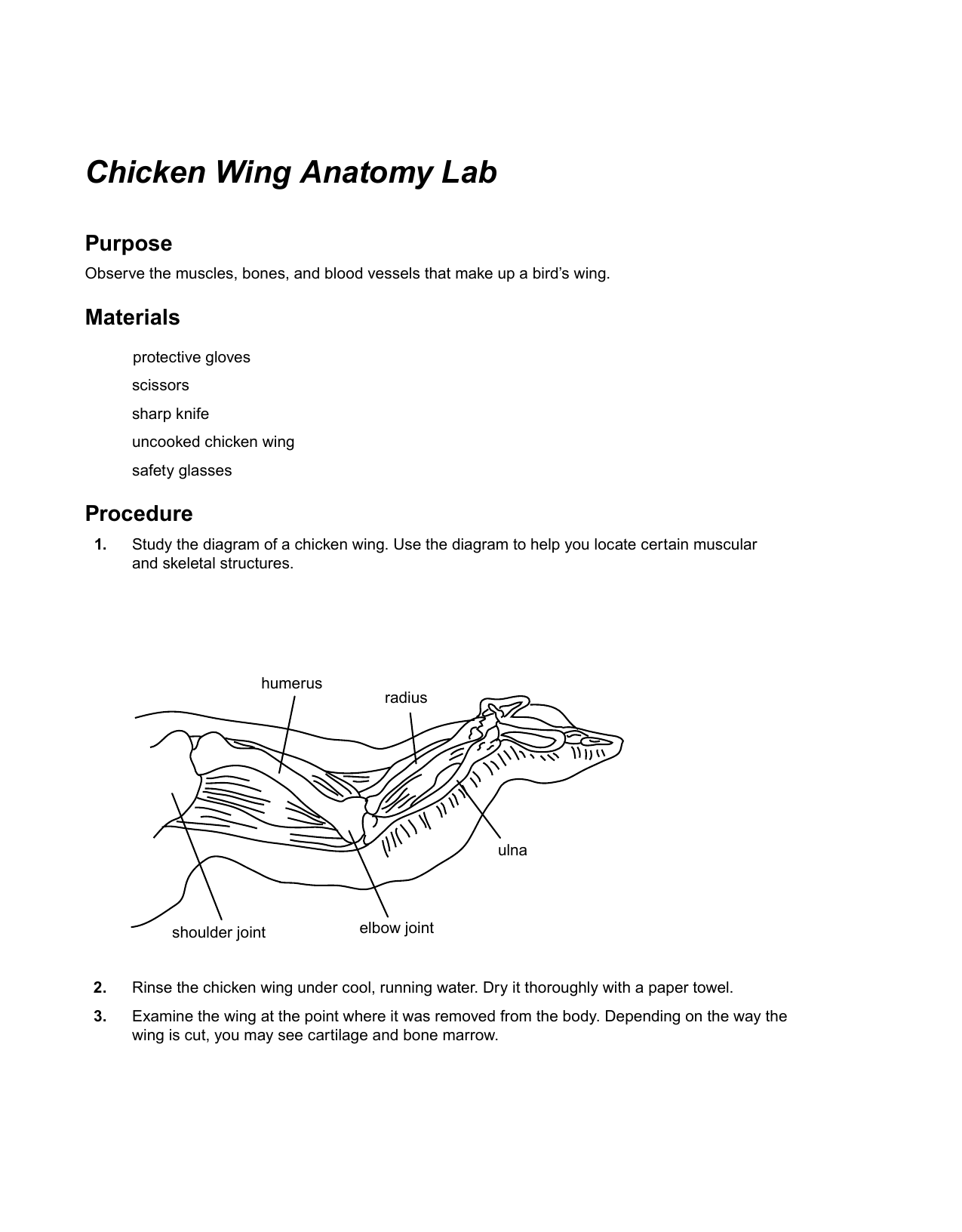
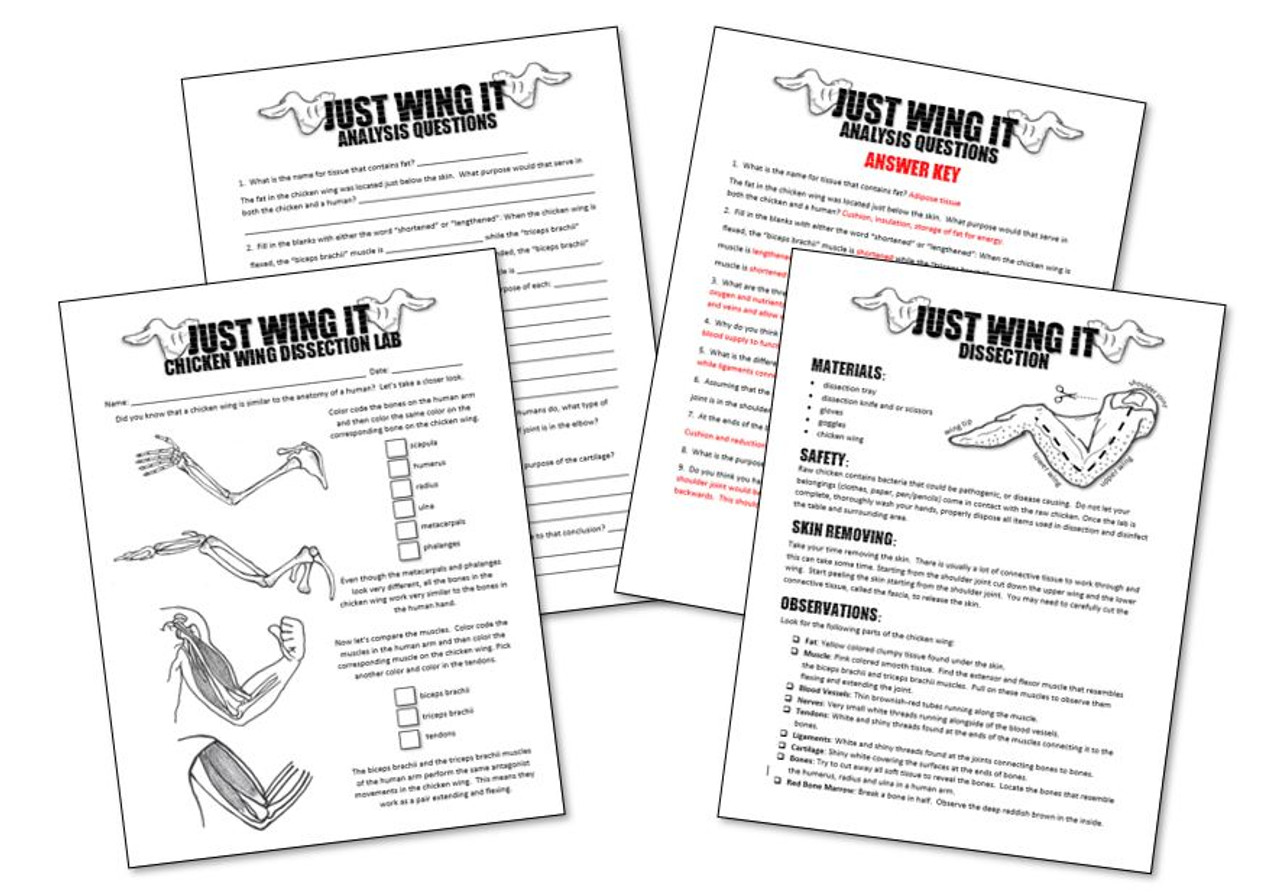

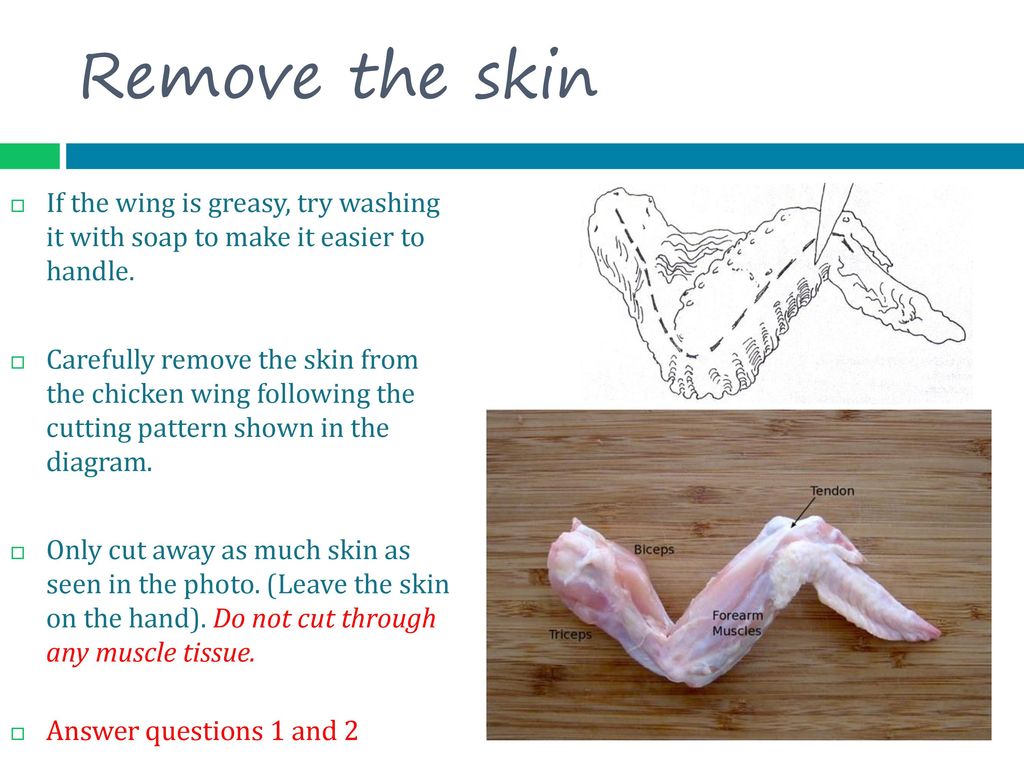
0 Response to "41 chicken wing dissection worksheet answers"
Post a Comment